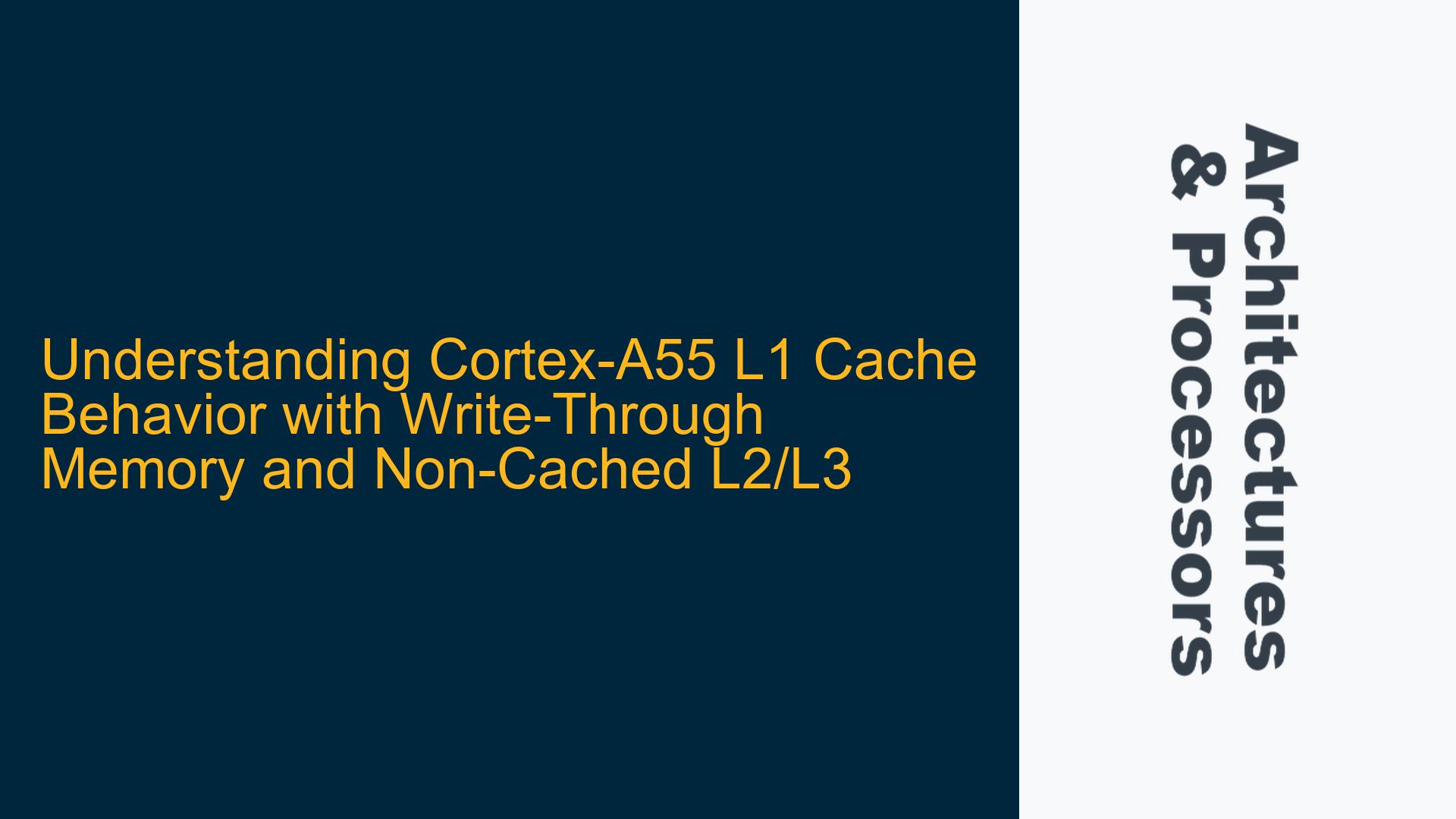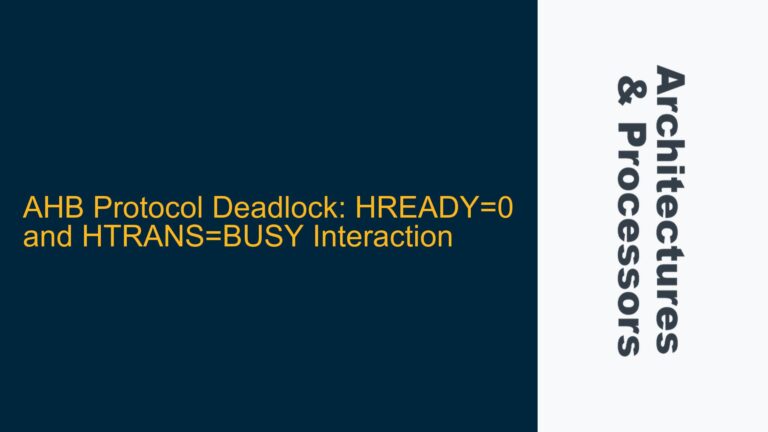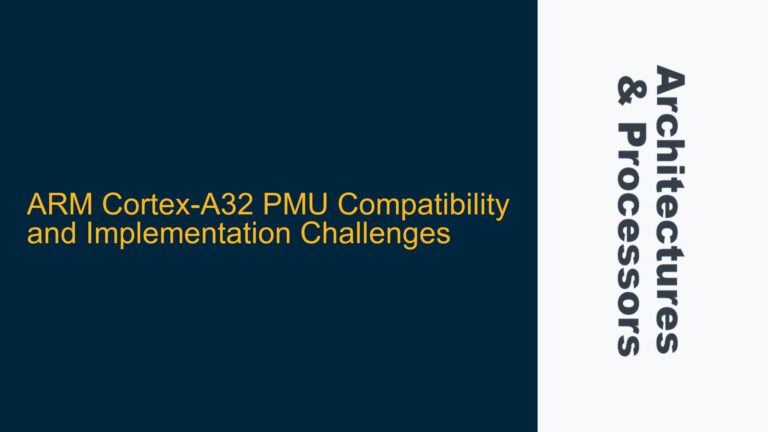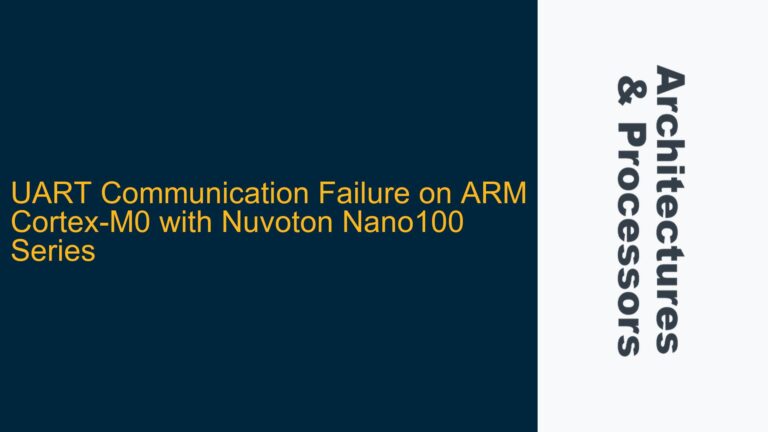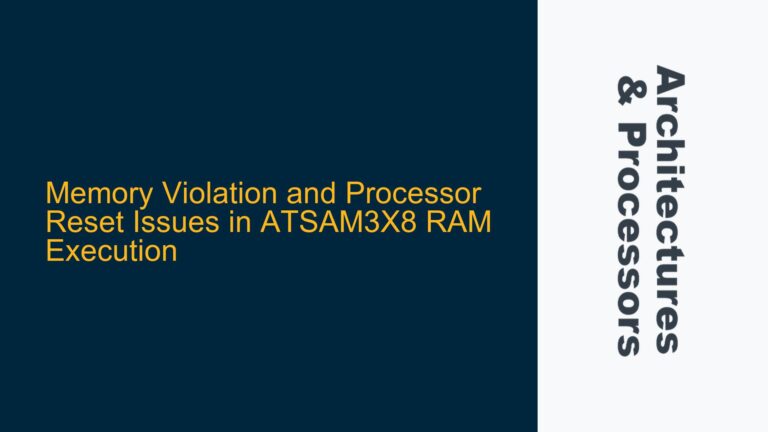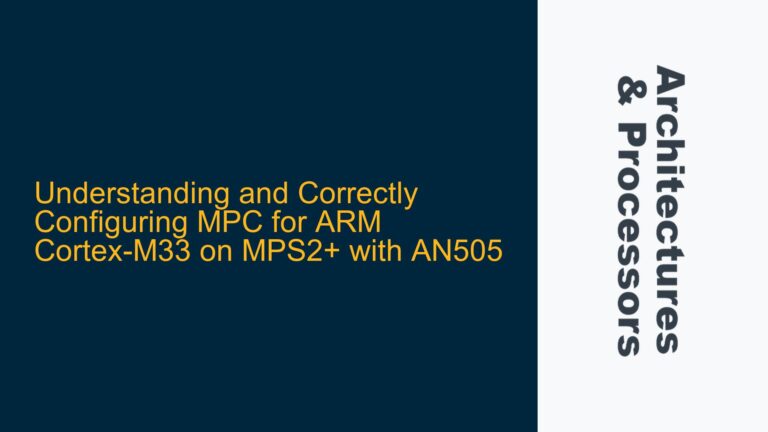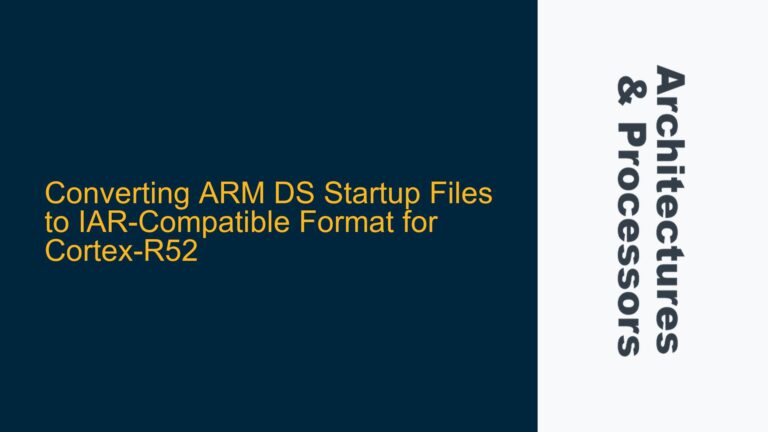Cortex-A55 L1 Cache Behavior with Write-Through Memory and Non-Cached L2/L3
The Cortex-A55 processor, as part of the ARMv8 architecture, implements a sophisticated memory hierarchy that includes L1, L2, and L3 caches. However, the behavior of these caches can vary significantly depending on the memory type and cacheability attributes assigned to specific memory regions. One of the key points of confusion arises when dealing with Write-Through (WT) memory regions, which are cached in the L1 instruction cache but not in the L2 or L3 caches. This behavior is distinct from Write-Back (WB) memory regions, which can be cached across all levels of the cache hierarchy.
The Cortex-A55 Technical Reference Manual (TRM) specifies that memory marked as Write-Through cannot be cached on the data-side and does not make coherency requests. On the instruction-side, Write-Through memory can be cached in the L1 instruction cache, but only Write-Back memory can be cached in the L2 or L3 caches. This distinction is critical for understanding how data and instructions flow through the cache hierarchy and how performance can be impacted by memory type configurations.
The primary issue here is understanding the implications of this behavior. Specifically, how does the Cortex-A55 handle memory accesses when Write-Through memory is involved? Why is Write-Through memory restricted to the L1 cache, and what are the performance trade-offs of this design choice? Additionally, how does the Cortex-A55 ensure that data and instructions are correctly synchronized when dealing with mixed cacheability attributes?
To fully grasp these concepts, it is essential to delve into the architecture of the Cortex-A55, the role of cacheability attributes, and the mechanisms by which the processor manages memory accesses. This analysis will also explore the implications of allocation hints and how they interact with cacheability policies.
Memory Type Configuration and Cacheability Domains in Cortex-A55
The Cortex-A55 processor supports multiple memory types, including Normal Memory, Device Memory, and Strongly-Ordered Memory. Each of these memory types can be further classified based on their cacheability attributes, which determine how data is stored and retrieved from the cache hierarchy. The two primary cacheability attributes relevant to this discussion are Write-Through (WT) and Write-Back (WB).
Write-Through Memory Behavior
Write-Through memory is characterized by the immediate writing of data to both the cache and the main memory. This ensures that the main memory is always up-to-date, but it can result in higher memory traffic and reduced performance due to the frequent writes to main memory. In the Cortex-A55, Write-Through memory has specific restrictions:
-
Data-Side Access: Write-Through memory cannot be cached on the data-side. This means that any data access to a Write-Through memory region will bypass the L1 data cache and go directly to main memory. This behavior is enforced to maintain coherency and ensure that the data in main memory is always consistent with the data in the cache.
-
Instruction-Side Access: Write-Through memory can be cached in the L1 instruction cache. This allows the processor to cache instructions from Write-Through memory regions, reducing the need to fetch instructions from main memory repeatedly. However, these instructions are not cached in the L2 or L3 caches, limiting the scope of caching to the L1 instruction cache.
Write-Back Memory Behavior
Write-Back memory, on the other hand, allows data to be written to the cache without immediately writing to main memory. This reduces memory traffic and improves performance, but it requires careful management to ensure data coherency. In the Cortex-A55, Write-Back memory can be cached across all levels of the cache hierarchy, including L1, L2, and L3.
Mixed Inner and Outer Cacheability
The Cortex-A55 also supports mixed inner and outer cacheability attributes. Inner cacheability refers to the cacheability domain within the processor cluster, while outer cacheability refers to the cacheability domain outside the cluster. Memory that is not marked as both inner and outer Write-Back cannot be cached on the data-side and does not make coherency requests. This restriction applies only to the memory type and not to the allocation hints, which are used to control cache line allocation behavior.
Allocation Hints and Cache Line Allocation
Allocation hints are used to specify whether cache lines should be allocated on read misses, write misses, or both. These hints are applicable only to cacheable memory regions (Write-Back or Write-Through) and do not affect non-cacheable memory. The Cortex-A55 treats allocation hints as recommendations, and the processor may choose to ignore them based on its internal policies and resource availability.
Cortex-A55 Cache Hierarchy and Direct Memory Access
The Cortex-A55 cache hierarchy is designed to optimize performance by reducing the latency of memory accesses. The L1 cache is the fastest and closest to the processor core, while the L2 and L3 caches are larger but slower. The behavior of the cache hierarchy is influenced by the memory type and cacheability attributes, as well as the allocation hints.
L1 Cache Direct Memory Access
When dealing with Write-Through memory, the Cortex-A55 ensures that data accesses bypass the L1 data cache and go directly to main memory. This is achieved by configuring the memory type attributes in the Memory Management Unit (MMU) and the cache controller. The MMU translates virtual addresses to physical addresses and determines the cacheability attributes for each memory region. The cache controller then enforces these attributes by controlling the flow of data between the processor core, the caches, and main memory.
For instruction accesses, the Cortex-A55 allows Write-Through memory to be cached in the L1 instruction cache. This is done to improve instruction fetch performance by reducing the need to access main memory for frequently executed instructions. However, since Write-Through memory is not cached in the L2 or L3 caches, the scope of caching is limited to the L1 instruction cache.
L2 and L3 Cache Behavior
The L2 and L3 caches in the Cortex-A55 are designed to handle Write-Back memory regions. When a memory region is marked as Write-Back, the processor can cache data and instructions in the L2 and L3 caches, reducing the need to access main memory. This improves performance by reducing memory latency and increasing the effective memory bandwidth.
However, when dealing with Write-Through memory, the L2 and L3 caches are bypassed. This means that data accesses to Write-Through memory regions will always go directly to main memory, while instruction accesses will be cached only in the L1 instruction cache. This behavior is enforced to maintain coherency and ensure that the data in main memory is always consistent with the data in the cache.
Prefetching and Cache Allocation
The Cortex-A55 includes a prefetcher that predicts future memory accesses and prefetches data into the cache to reduce latency. The prefetcher operates independently of the cacheability attributes and can prefetch data into the L1, L2, or L3 caches based on the memory type and allocation hints.
When dealing with Write-Through memory, the prefetcher may still prefetch data into the L1 instruction cache, but it will not prefetch data into the L2 or L3 caches. This is because Write-Through memory is not cached in the L2 or L3 caches, and prefetching data into these caches would be redundant.
Cache Coherency and Data Synchronization
The Cortex-A55 implements a cache coherency protocol to ensure that all cores in a multi-core system have a consistent view of memory. This protocol is particularly important when dealing with Write-Through memory, as it ensures that data written to main memory is immediately visible to all cores.
Data synchronization barriers (DSBs) and instruction synchronization barriers (ISBs) are used to enforce the correct ordering of memory accesses and ensure that the processor core has a consistent view of memory. These barriers are essential when dealing with mixed cacheability attributes, as they prevent the processor from accessing stale data or instructions.
Implementing Cache Management Strategies for Cortex-A55
To optimize performance and ensure correct behavior when dealing with Write-Through memory and non-cached L2/L3 regions, it is essential to implement effective cache management strategies. These strategies should take into account the memory type, cacheability attributes, and allocation hints, as well as the specific requirements of the application.
Configuring Memory Type Attributes
The first step in implementing an effective cache management strategy is to configure the memory type attributes in the MMU. This involves setting the appropriate cacheability attributes for each memory region based on the access patterns and performance requirements of the application.
For example, memory regions that are frequently accessed and require low latency should be marked as Write-Back to allow caching in the L1, L2, and L3 caches. Memory regions that require strict coherency and immediate visibility to all cores should be marked as Write-Through to ensure that data is immediately written to main memory.
Using Allocation Hints Effectively
Allocation hints can be used to control cache line allocation behavior and optimize cache utilization. For example, setting the allocation hint to read-allocate can reduce cache pollution by allocating cache lines only on read misses, while setting the allocation hint to write-allocate can improve write performance by allocating cache lines on write misses.
However, it is important to note that allocation hints are only recommendations, and the Cortex-A55 may choose to ignore them based on its internal policies and resource availability. Therefore, it is essential to carefully evaluate the impact of allocation hints on performance and adjust them as needed.
Implementing Data Synchronization Barriers
Data synchronization barriers (DSBs) and instruction synchronization barriers (ISBs) are essential for ensuring correct behavior when dealing with mixed cacheability attributes. These barriers should be used to enforce the correct ordering of memory accesses and prevent the processor from accessing stale data or instructions.
For example, a DSB should be used after writing to a Write-Through memory region to ensure that the write has completed before proceeding to the next instruction. Similarly, an ISB should be used after modifying the MMU configuration to ensure that the processor core has a consistent view of memory.
Monitoring Cache Performance
Finally, it is important to monitor cache performance and adjust the cache management strategy as needed. This can be done using performance counters and profiling tools to measure cache hit rates, miss rates, and memory access latency. Based on these measurements, the cache management strategy can be adjusted to optimize performance and ensure correct behavior.
In conclusion, understanding the behavior of the Cortex-A55 cache hierarchy when dealing with Write-Through memory and non-cached L2/L3 regions is essential for optimizing performance and ensuring correct behavior. By configuring memory type attributes, using allocation hints effectively, implementing data synchronization barriers, and monitoring cache performance, developers can implement effective cache management strategies that take full advantage of the Cortex-A55 architecture.
